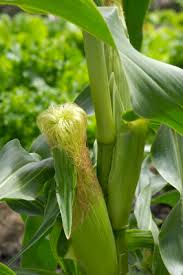The role of artificial pollination and pollen effect on ear development and kernel structure of different maize genotypes
DOI:
https://doi.org/10.26786/1920-7603(2015)1Abstract
Pollen effect is important on several kernel traits in maize breeding and may vary under different pollination treatments. Our objectives in this study were i) to evaluate the effects of pollination treatments that are commonly used in maize breeding, on several ear and kernel traits, ii) to investigate if the genotypes so called “specialty corn” do have any different reaction to the pollen effect. A field trial was carried out at Dardanos Research and Application Center of Çanakkale Onsekiz Mart University, Turkey, in 2013. The experiment used a split plot design with three replicates. Four parents (three inbreds and one open pollinated landrace) were used as plant material. Three pollination treatments (open pollination, self-pollination and bulk pollination) were applied, and individual pollen effect of each parent on other parents was investigated. For this purpose, several ear and kernel traits (ear weight, kernel weight, kernel number, mean kernel weight) and biochemical features (protein, oil, carbohydrate and carotenoid content) were measured on harvested samples.
The results showed that pollination treatment affected the variation on all traits except for oil content (P < 0.05). Self-pollination caused a significant reduction in kernel development. Pollen effect was found significant for most traits and this effect was evident on the related genotypes with open pollinated landrace. Results indicate that pollen effect is an important factor on kernel and ear development in small plot trials, where different types of maize are grown together.
Downloads
Published
How to Cite
Issue
Section
License
Copyright (c) 2015 Fatih Kahrıman, Cem Ömer Egesel, Tuncay Aydın, Selinnur Subaşı

This work is licensed under a Creative Commons Attribution 4.0 International License.
JPE is an open access journal which means that all content is freely available without charge to the user or his/her institution.
Authors who publish with this journal agree to the following terms:
1) Authors retain copyright and grant the journal right of first publication with the work simultaneously licensed under a Creative Commons Attribution License that allows others to share the work with an acknowledgement of the work's authorship and initial publication in this journal.
2) Authors are able to enter into separate, additional contractual arrangements for the non-exclusive distribution of the journal's published version of the work (e.g., post it to an institutional repository or publish it in a book), with an acknowledgement of its initial publication in this journal.
3) Authors are permitted and encouraged to post their work online (e.g., in institutional repositories or on their website) prior to and during the submission process, as it can lead to productive exchanges, as well as earlier and greater citation of published work (See The Effect of Open Access).
To assure a broader targeted audience, content will be included into databases (such as EBSCO) and directories (such as DOAJ).











